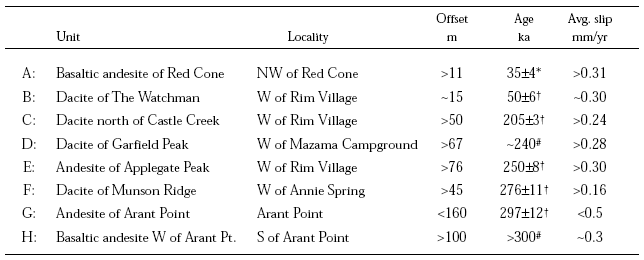Volcano and Earthquake Hazards in the Crater Lake Region, Oregon
Earthquakes
Cascadia Subduction Zone
The Juan de Fuca and Gorda oceanic plates move beneath the North American plate along the Cascadia subduction zone. This process generates earthquakes, such as the MI = 6.7 earthquake (MI = magnitude based in Intensity) that occurred near the California–Oregon State line on November 23, 1873, and was felt from San Francisco to Portland (Ellsworth, 1990). Geologic evidence indicates that there have been very large Cascadia subduction zone earthquakes in the recent past (Atwater and others, 1995), apparently most recently in 1700 A.D. (Satake and others, 1996). The maximum magnitude of a great earthquake on the Cascadia subduction zone is certainly MW ³ 8 (table 5) and evidence is mounting that the event in 1700 A.D. had MW ³ 9 (e.g., Satake and Tanioka, 1996). Probabilities of large earthquakes could be estimated if recurrence intervals were known but data are currently insufficient (Nelson and others, 1996). Probabilistic assessments of earthquake hazards in Oregon are described in detail by Geomatrix Consultants (1995)4.
Table 4.—Fault offsets (down to the east) and average long-term slip rates along Annie Spring and Red Cone Spring faults
[m, meters; ka, kilo-annum (103 years); mm/yr, millimeters per year]
* 40Ar/39Ar plateau age of whole rock sample by M.A. Lanphere.
† K–Ar age of whole rock sample by M.A. Lanphere.
# Constrained by K–Ar age(s) of contiguous unit(s).


